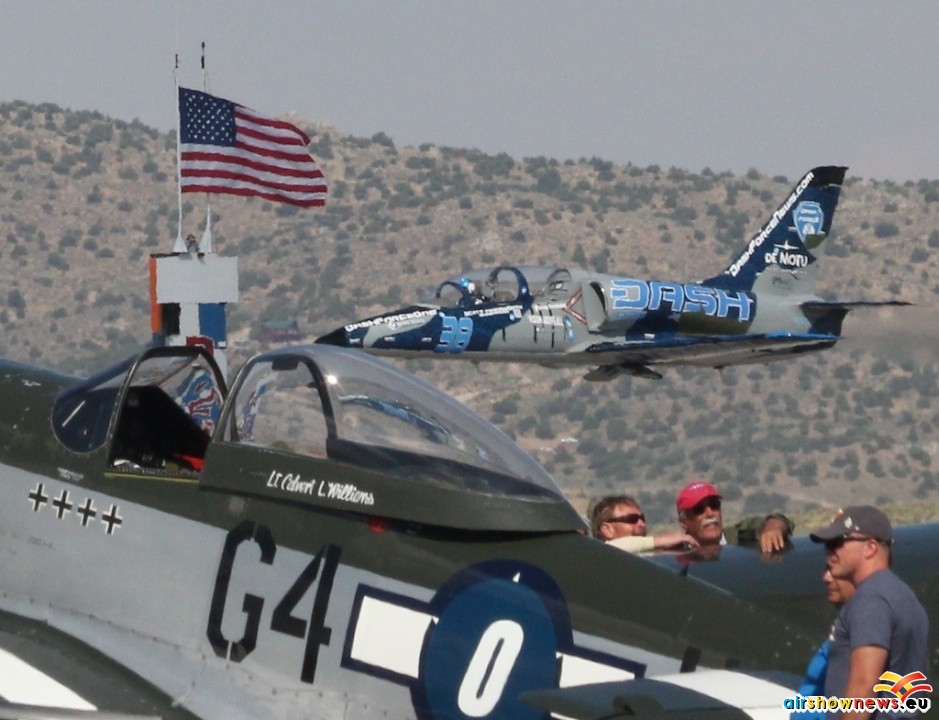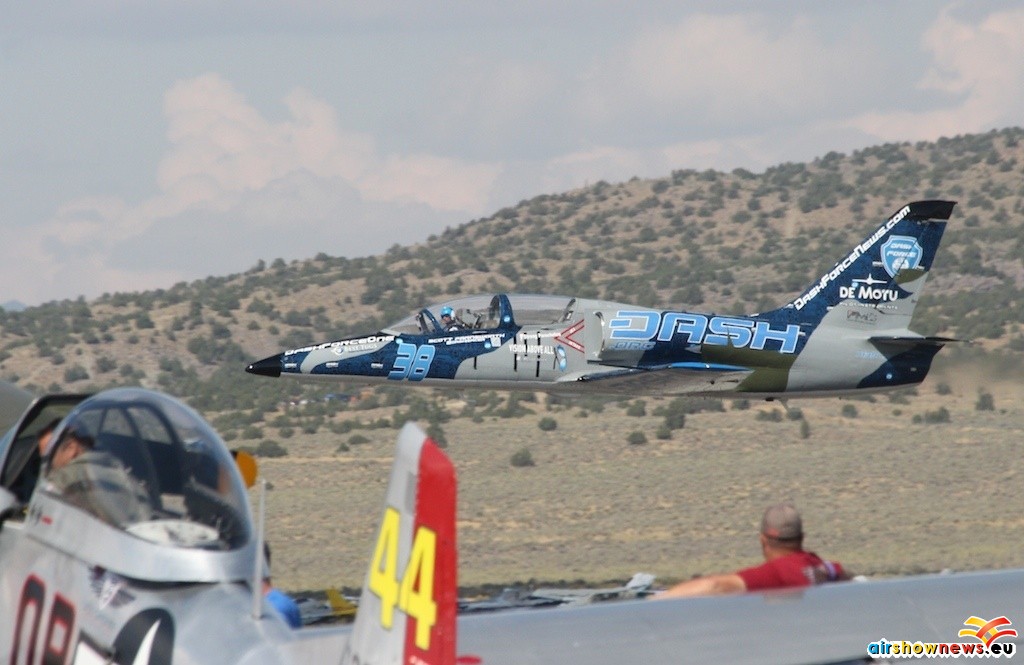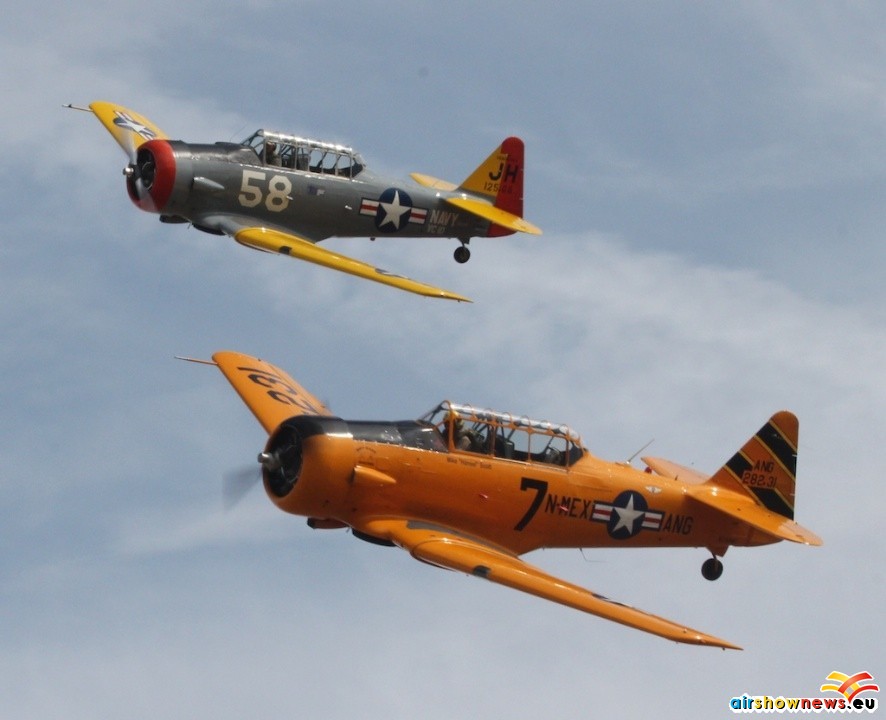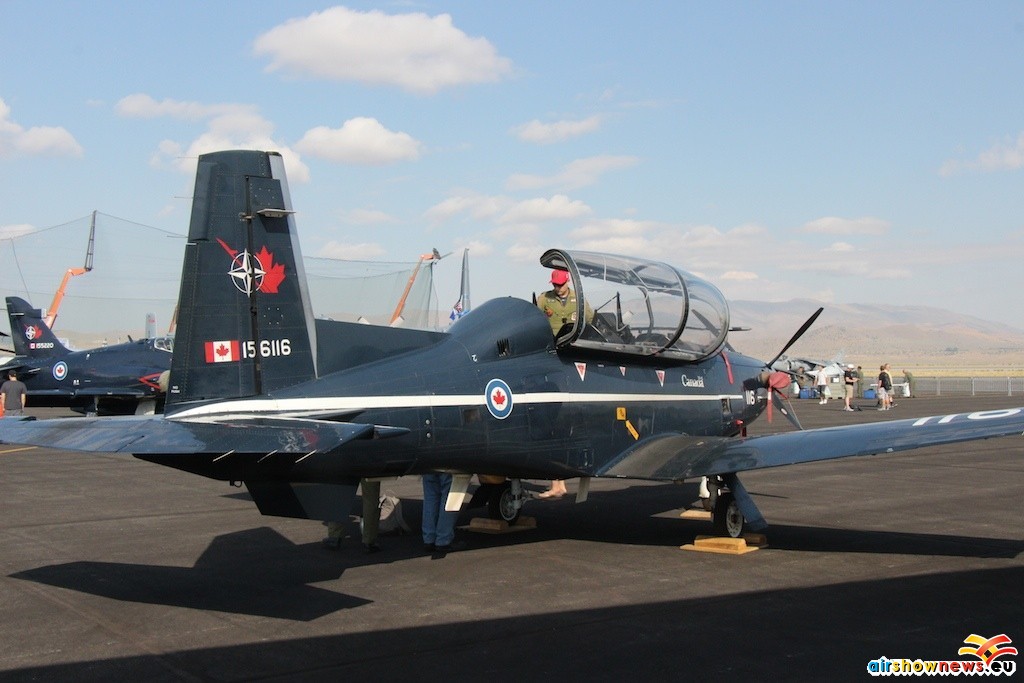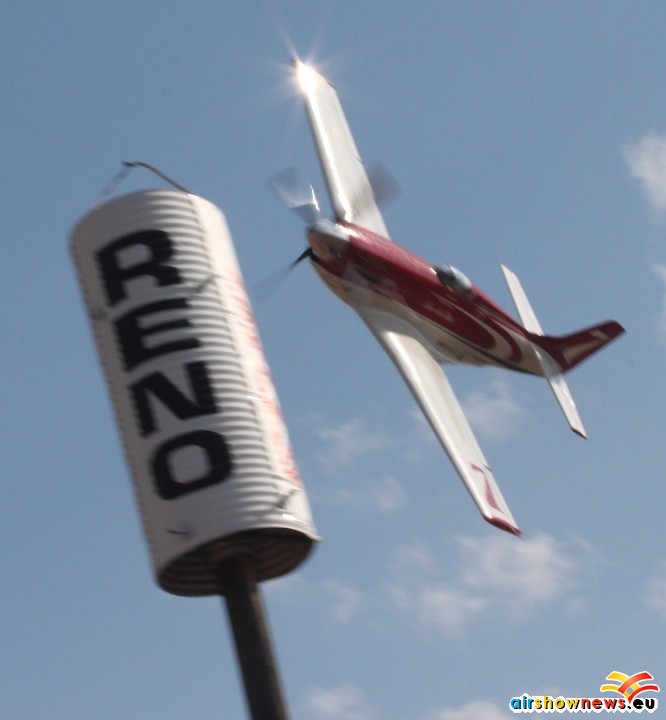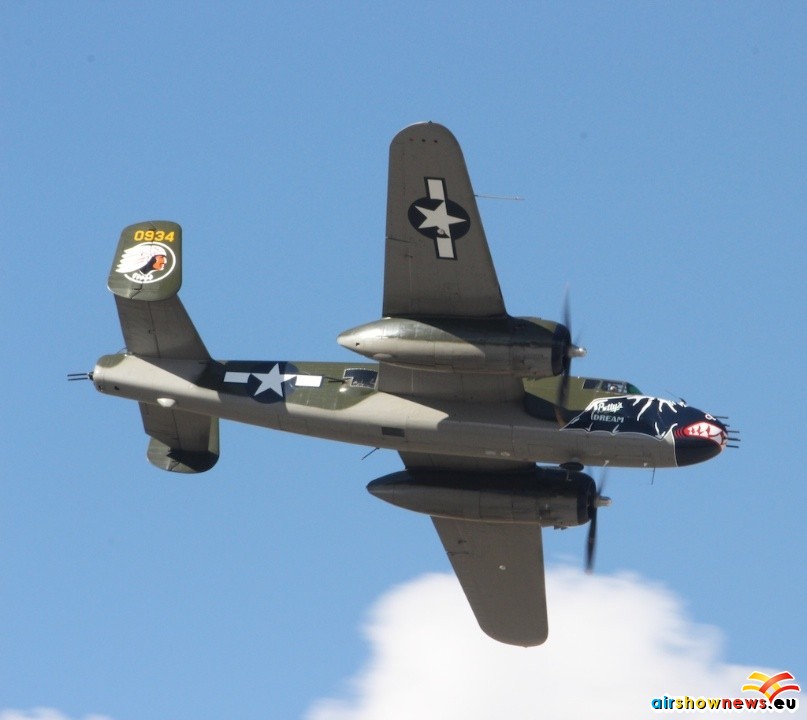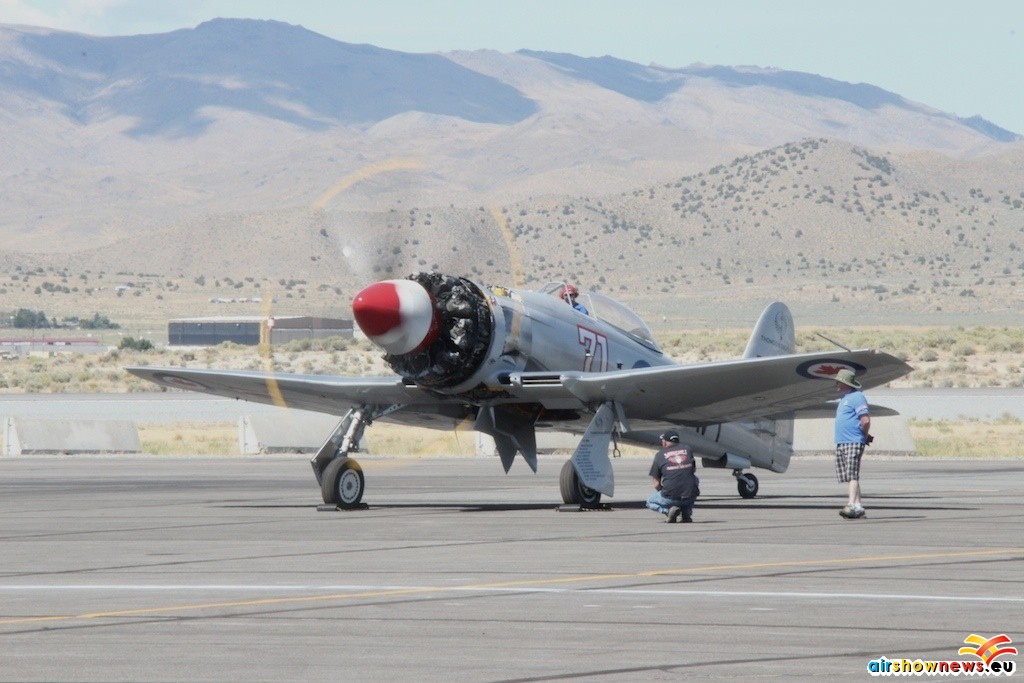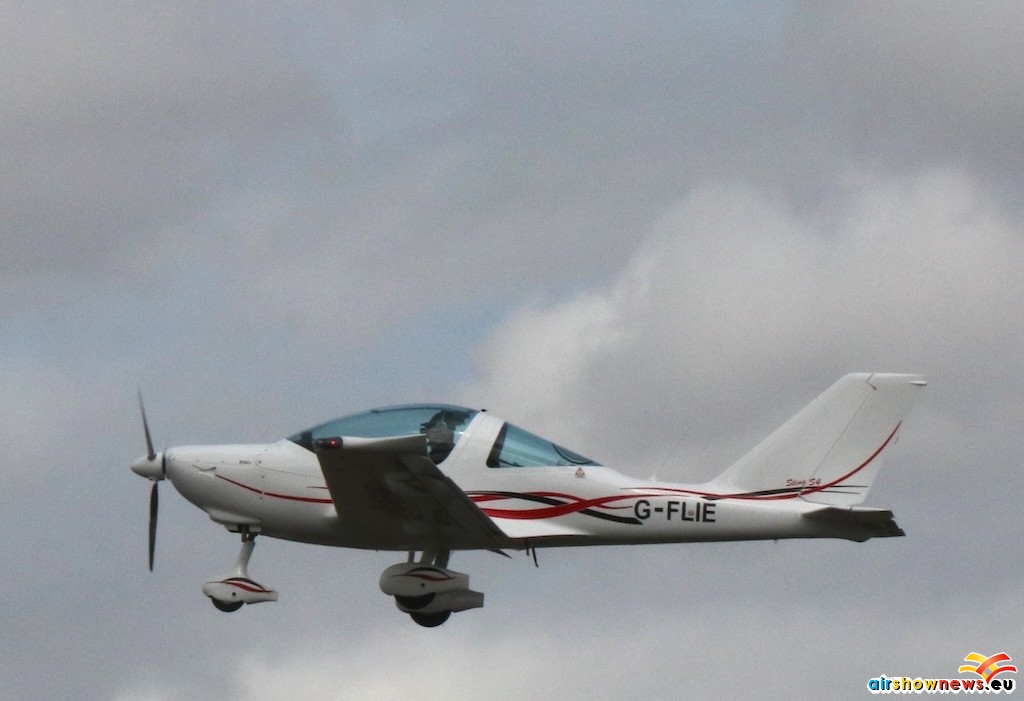54th National Air Races, Reno Stead Airfield, Nevada, USA
16-17th September 2017
Immortalised by speed lovers worldwide, this famous event polarises the region bringing thousands to this desert city every year. For the first time visitor the secret is to arrive at least three days early when admission is less expensive, competitors and vendors are making ready and the atmosphere builds between trials and heats. This prepares you for the crowds and excitement of the weekend finals.
Races are normally six laps long with classifications ranging from lighter types through T-6 Texans to warbirds and jets. The course is set around pylons; turning points spread across the desert with really only the main start and finish pylon close to the crowd-line; the others being so distant that the racers are bright specks that prevent close scrutiny as they jostle for position. Safety dictates that overtaking should be at a ‘slightly’ higher altitude though wingtips are often feet from the desert floor.
Much of the fun stuff goes on in the ‘pits’ where teams prepare their steeds. Akin to Formula 1, airframes are assembled, rebuilt, tweaked and polished between races amid the banter of old friends. Access to the pits can be purchased or accessed after racing finishes each day. Without pits access much of the flavour is lost though the ‘public’ zone does include some great free grandstands and a compact military static display that fills up as the weekend approaches.
The military static included a Chinook and Blackhawk helicopter from the Stead based squadrons, a Hercules from the Reno International Airport, F-15s from Oregon, A-10As from Idaho and three very welcome Canadians, a T-6 Texan II, Hawk and Hornet. An Alaska based C-17 dominated the scene.
For the fortunate media folk there is a draw each evening for the prestige ‘pylon 4’ where the scenery and light is best though only two hours/three races can be covered plus a morning and afternoon bus to the east and west pylons for more races but more challenging light. Here is the lifetime opportunity to master the evil art of combining the fixed pylon with the fast moving projectiles or a moment of aerial conflict known as ‘overtaking on a bend’. Capturing the essence of racing, movement and the moment changes conventional rules on shutter speed and autofocus; luck plays a part too. Strict safety borders try to ensure the safety of competitors and photographers alike.
From Tuesday to Friday the schedule tightens, long intervals midweek allow time in the pits with occasional periods when the flightline is kept ‘sterile’ to allow safe positioning and regular refuelling as the racers carry minimal fuel for each race. There are only a few conventional flight demonstrations. This year the local National Guard C130 squadron and a U-2 flew by plus a nostalgic (for us Brits) VTOL demo from a USMC Harrier.
A welcome flying feature this year was a tribute display from the Texas Flying Legends Museum who brought six aircraft for a tight formation display, individual displays with some even participating in the races. Even the locals appreciated that, with all those Mustangs present, the Spitfire was a premium low level display. If one could import the scenic backdrop and bright weather to Duxford then perfection might be close.
It is clear that the event includes many ‘regulars’ with Mustangs, Texans, modified Sea Furys and L39s dominant and the classic ‘unlimited’ class including custom designed racers rarely seen anywhere else. This is certainly a rich person’s game and, even for the public, certainly not a cheap day out. However, free parking on local roads, (with a very hot walk-in), after-race pit access and the generous free grandstands can keep it affordable. The city of Reno has more than enough distractions to keep the regular tourist content and the local infrastructure can certainly cope with this annual extravaganza.
After over fifty years of attending airshows I cannot believe I waited this long to make the Reno pilgrimage!
